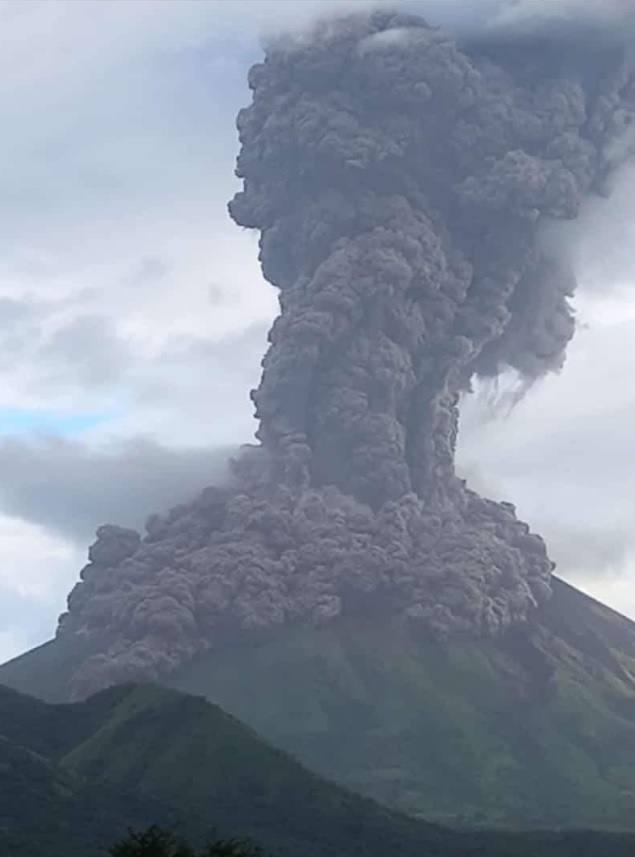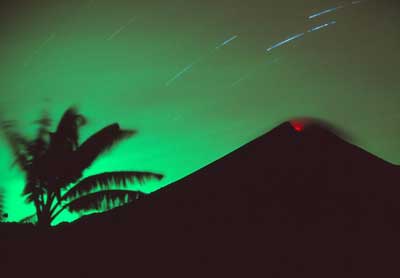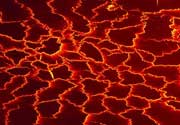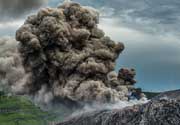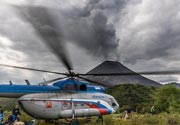San Cristobal Volcano
Updated: Apr 24, 2024 06:59 GMT -
stratovolcano 1745 m / 5,725 ft
Nicaragua, 12.7°N / -87°W
Current status: normal or dormant (1 out of 5)
Nicaragua, 12.7°N / -87°W
Current status: normal or dormant (1 out of 5)
Last update: 14 Oct 2023 (Smithsonian / USGS Weekly Volcanic Activity Report)
San Cristobal volcano, also known as El Viejo, is the highest and one of the most active volcanoes in Nicaragua. It is located near the northwest corner of the country near the city of Chinandega, 110 km WSW of the capital Managua.
San Cristobal has had frequent small to medium-sized ash eruptions reported since the 16th century. When first observed by the Spanish in 1528, the volcano was in strong eruption and was described as sending "smoke" during the day and "flames" at night.
[smaller] [larger]
San Cristobal volcano eruptions: 2016, 2015, 2012, 2010-11, 2010, 2009, 2008 (Nov), 2008 (Aug), 2007, 2005-06, 2003-04, 2002, 2001, 2000, 1999-2000, 1997,1987 (?), 1985 (?), 1977, 1976 (Aug), 1976 (Mar), 1971, 1685, 1684, 1680, 1613 (?), 1528 ± 1 year
Latest nearby earthquakes
| Time | Mag. / Depth | Distance / Location | |||
| Apr 15, 03:10 pm (Managua) | 2.0 9 km | 14 km (8.9 mi) to the W | Info | ||
| Apr 15, 03:06 pm (Managua) | 2.3 8 km | 15 km (9.2 mi) to the W | Info | ||
| Friday, April 12, 2024 GMT (2 quakes) | |||||
| Apr 12, 02:22 pm (Managua) | 1.7 5 km | 26 km (16 mi) to the NW | Info | ||
| Apr 12, 04:49 am (Managua) | 2.9 4 km | 22 km (14 mi) to the N | Info | ||
Background
The San Cristóbal volcanic complex at the NW end of the Marrabios Range consists of 5 main volcanic edifices: 1 the main cone of San Cristóbal, which contains a 500 x 600 m wide crater, 2 El Chonco, with several flank lava domes, located 4 km to the west of San Cristóbal, 3 the eroded Moyotepe volcano 4 km to the NE of San Cristóbal, 3 Volcán Casita with an elongated summit crater immediately east of San Cristóbal, and 5 La Pelona, an older caldera is located at the eastern end of the San Cristóbal complex.Volcán Casita volcano was probably active in the 16th century and has several active fumarole fields. It was the site of a catastrophic landslide and lahar in 1998, triggered by torrential rains from Hurricane Mitch, and killing 1560 people.
The climb to San Cristóbal with its very steep slopes is one of the most difficult climbs in Nicaragua. The climb takes about 1 day normally and guides can be found in León or Chinandega.
San Cristobal Volcano Photos
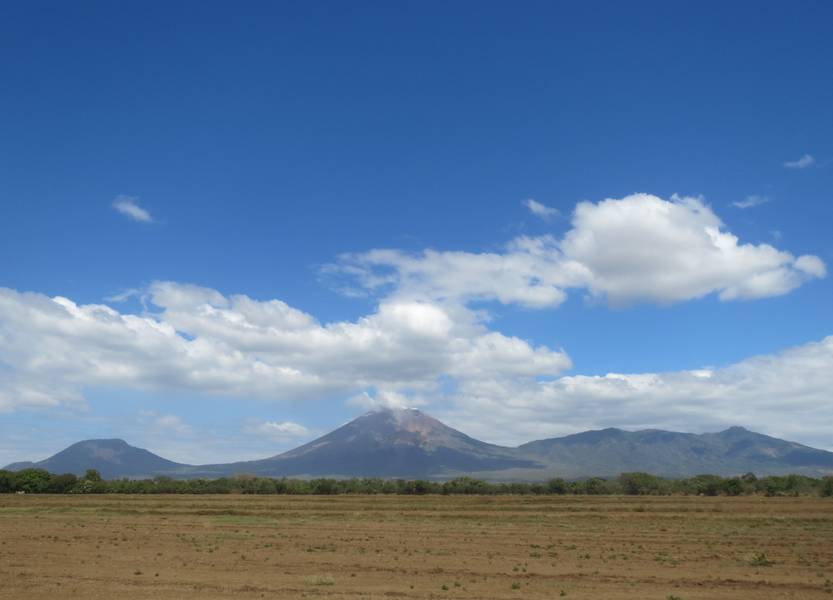
Volcanoes El Chonco, San Cristobal (highest volcano in Nicaragua) and Casita, view from Chichigalpa (Photo: WNomad)

Stratovolcano San Cristobal, view from Chichigalpa, Nicaragua (Photo: WNomad)
Eruptions of San Cristobal volcano
2004-2010 eruptions
Frequent small ash and gas explosions took place during 2006-2010.
More intense periods of activity were recorded in Dec 2004, Nov 2005 - February 2006. Small phreatic explosions causing minor ash fall were noted on 6 March and 23 April 2006.
Another episode of phreatic explosions began on 18 May and continued until 27 May 2006.
Climbers at the summit on 10 November 2006. aw fresh ejecta from explosions during the previous days.
On 22 June 2008, a moderate explosion generated a gas-and-ash plume causing minor ash fall in 16 km distance SW. A series of explosions occurred on 11 July, and again on 22 November 2008.
An explosion on 6 September 2009 generated a small 200 m high ash plume, and one on 14 Sep reached 350 m.
On 9 June 2010, the Washington VAAC reported a well-defined ash plume drifting about 115 km WNW and originating most likely from San Cristobal.
Frequent small ash and gas explosions took place during 2006-2010.
More intense periods of activity were recorded in Dec 2004, Nov 2005 - February 2006. Small phreatic explosions causing minor ash fall were noted on 6 March and 23 April 2006.
Another episode of phreatic explosions began on 18 May and continued until 27 May 2006.
Climbers at the summit on 10 November 2006. aw fresh ejecta from explosions during the previous days.
On 22 June 2008, a moderate explosion generated a gas-and-ash plume causing minor ash fall in 16 km distance SW. A series of explosions occurred on 11 July, and again on 22 November 2008.
An explosion on 6 September 2009 generated a small 200 m high ash plume, and one on 14 Sep reached 350 m.
On 9 June 2010, the Washington VAAC reported a well-defined ash plume drifting about 115 km WNW and originating most likely from San Cristobal.
1997 eruption
An eruption began at San Cristóbal volcano during the night of 19-20 May 1997. The eruption had been preceded by 2 weeks of intense seismic activity and elevated SO2 emission. A series of ash explosions occurred, producing plumes rising up to 800 m. On 20 May explosions were sometimes nearly continuous for few minutes, and then stopped for minutes or even hours.
One explosion on 22 May could be heard in 3 km distance.
Field work on 23 May revealed that the inner pit crater of the inner crater cone had grown considerably and a new a new 4 m wide vent was observed at the SW end of its floor, at a location where there had been high-temperature fumaroles (600 deg C) previously.
The activity produced a layer of light gray ash on the W flank of the mountain. Activity calmed down towards the end of May, but isolated eruptions occurred throughout June and July.
Source: Smithsonian / GVP monthly reports
An eruption began at San Cristóbal volcano during the night of 19-20 May 1997. The eruption had been preceded by 2 weeks of intense seismic activity and elevated SO2 emission. A series of ash explosions occurred, producing plumes rising up to 800 m. On 20 May explosions were sometimes nearly continuous for few minutes, and then stopped for minutes or even hours.
One explosion on 22 May could be heard in 3 km distance.
Field work on 23 May revealed that the inner pit crater of the inner crater cone had grown considerably and a new a new 4 m wide vent was observed at the SW end of its floor, at a location where there had been high-temperature fumaroles (600 deg C) previously.
The activity produced a layer of light gray ash on the W flank of the mountain. Activity calmed down towards the end of May, but isolated eruptions occurred throughout June and July.
Source: Smithsonian / GVP monthly reports





